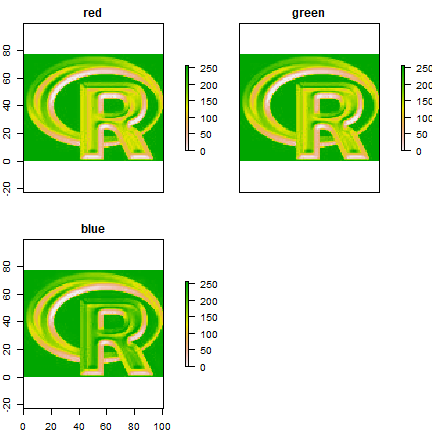Plotting¶
Several generic functions have been implemented for Raster* objects to
create maps and other plot types. Use ‘plot’ to create a map of a
Raster* object. When plot is used with a RasterLayer, it calls the
function ‘rasterImage’ (but, by default, adds a legend; using code from
fields::image.plot). It is also possible to directly call image. You
can zoom in using ‘zoom’ and clicking on the map twice (to indicate
where to zoom to). With click it is possible to interactively query
a Raster* object by clicking once or several times on a map plot.
After plotting a RasterLayer you can add vector type spatial data
(points, lines, polygons). You can do this with functions points, lines,
polygons if you are using the basic R data structures or plot(object,
add=TRUE) if you are using Spatial* objects as defined in the sp
package. When plot is used with a multi-layer Raster* object, all
layers are plotted (up to 16), unless the layers desired are indicated
with an additional argument. You can also plot Raster* objects with
spplot. The rasterVis package has several other lattice
based plotting functions for Raster* objects. rasterVis also
facilitates creating a map from a RasterLayer with the ggplot2
package.
Multi-layer Raster objects can be plotted as individual layers
library(raster)
b <- brick(system.file("external/rlogo.grd", package="raster"))
plot(b)

They can also be combined into a single image, by assigning individual layers to one of the three color channels (red, green and blue):
plotRGB(b, r=1, g=2, b=3)

You can also use the a number of other plotting functions with a
raster object as argument, including hist, persp,
contour, and density. See the help files for more info.